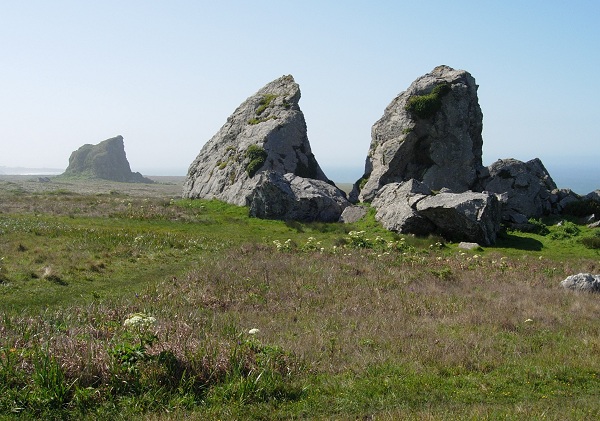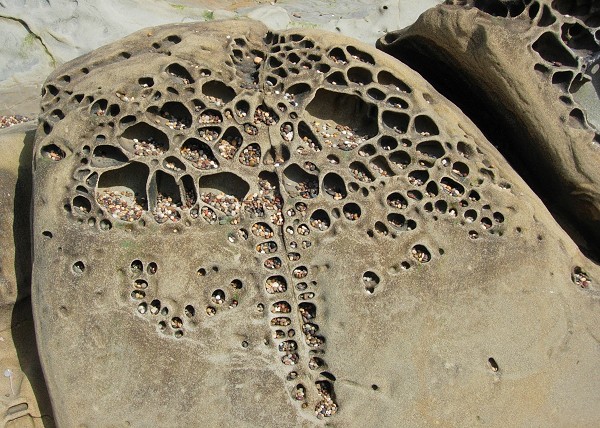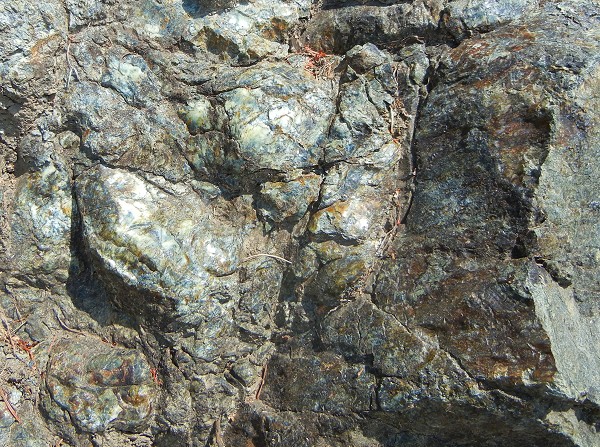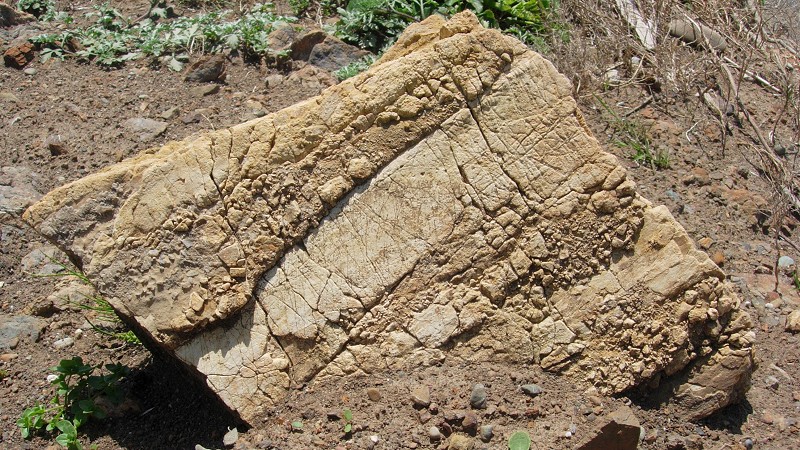
Every year, around the opposite side of the calendar from Earth Day, is a loosely organized event called Earth Science Week. (It also has a Facebook page.) Earth Science Week is October 12-18 this year, and the special theme for 2014 is “Earth’s Connected Systems.” Think of it as a series of treasure hunts with a mass demonstration in the middle.
Sunday the 12th launches Earth Science Week with International EarthCache Day. EarthCaches are a science-oriented kind of geocache—you visit a precise location, using a GPS instrument, and follow a set of instructions to learn about what geological feature you’re seeing there. Unlike ordinary geocaches, you don’t retrieve a hidden box and trade for one of the trinkets inside. But you can earn a special EarthCache souvenir that day.
Monday is Earth Science Literacy Day. Task forces of geologists have been debating the concept of “Earth science literacy” for the last few years, deciding what are the most important things we want you to know. The Earth Science Week website suggests that you start with nine “big ideas.” This page is pitched at teachers, but you can be your own teacher any time.

Tuesday is No Child Left Inside Day. Teachers are finding it more and more of a hassle to take their classes outdoors, despite the well-known benefits of simply getting outside and walking around. Why not skip the permission slips and do it yourself, with or without a child of your own. Teachers of all kinds, even informal ones like most of us, can use a page of ideas and guidelines from the Earth Science Week organizers.
National Fossil Day is Wednesday, October 15. This is mainly celebrated by the National Park Service, and events are scheduled across the country. If you happen to be in Washington DC, the Smithsonian Institution is sponsoring a set of activities. But my friends on Twitter will surely be showing off their fossils that day too.


